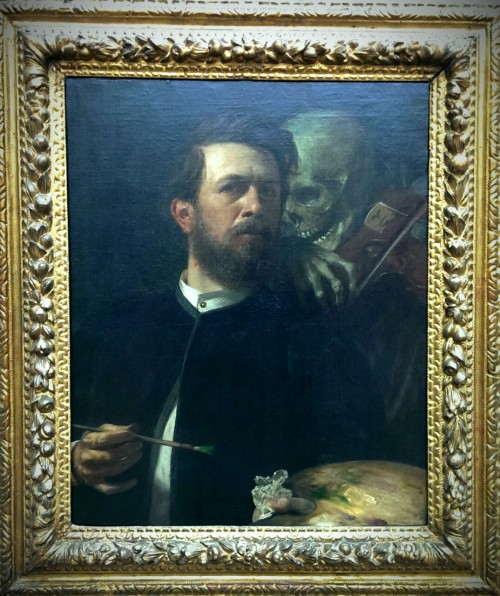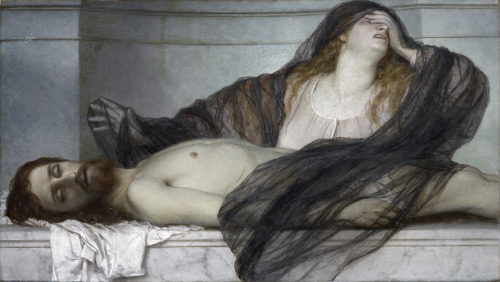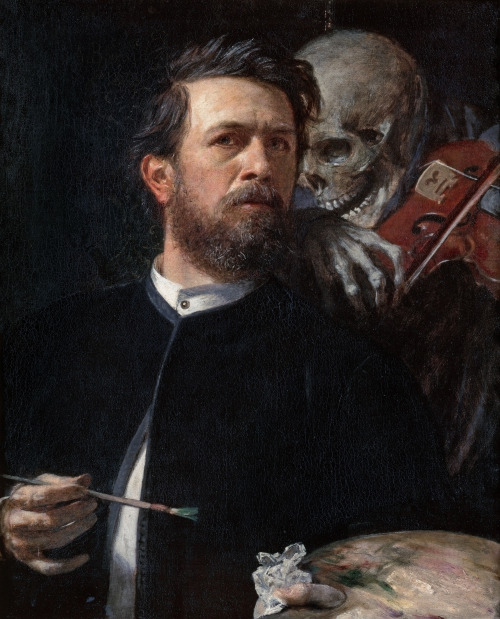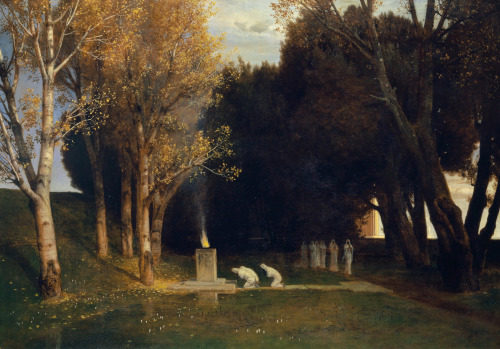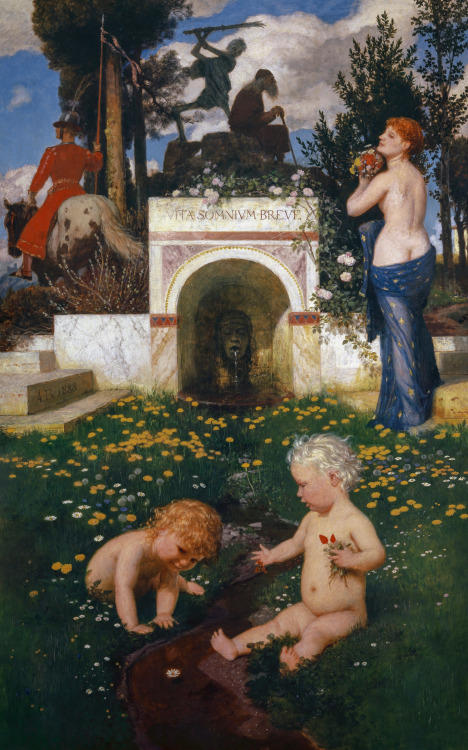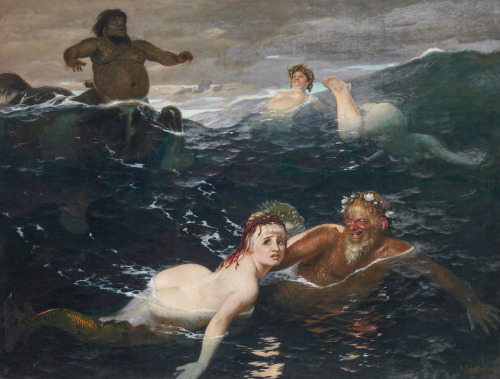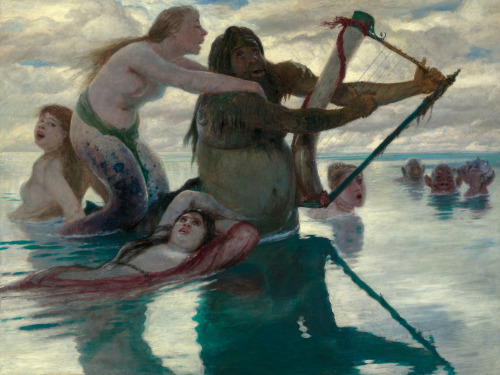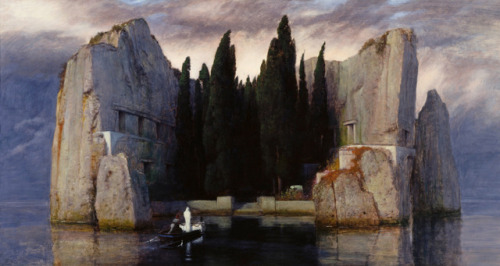#arnold böcklin
A Hamadryade (1893), by J.W. Waterhouse
The painting shows a Hamadryade (a nymph living in a tree) spying on Pan while he plays a pan flute. Nature was idealized in the Romantic tradition and particularly the Symbolist movement used “pre-historic” images of a world full of mythical creatures. Arnold Böcklin is another typical example of such a Symbolist painter from Germany. Waterhouse however dared to go one step further by painting Pan as a young boy and the nymph fully naked. Only some leaves barely hide her vagina - the sexual connotation is obvious. The work bares resemblance to “A Naiad”, also painted in 1893 and described earlier in this blog.
In some of his early works, Waterhouse used peculiar compositions or formats and with this painting he used the same trick because it measures a height of 160 cm, while it is only 61 cm wide. The work was displayed in the Royal Art Academy in the same year of its painting.
Post link
Heinrich Schulz-Beuthen: Die Toteninsel (1909) - Moscow Symphony Orchestra - Adriano, conductor
Die Toteninsel(Fünfte Version, 1886, Öl auf Holz - Museum der bildenden Künste, Leipzig) - Arnold Böcklin
Post link
Arnold Böcklin (1827-1901), Self-Portrait with Death Playing the Fiddle, 1872, oil on canvas, 61 x 75 cm. Alte Nationalgalerie
-
In this self-portrait, Death is playing on the lowest string, tuned to G, which is here also the only string of the fiddle. The painter, alert, has paused in his work. According to the story, Böcklin only painted in the figure of Death in response to his friends’ asking what he seemed to be listening to. This clearly relates to the search for the ultimate that characterizes this self-portrait, and the inspiration the artist draws from the constant proximity of death.
-
Mysterious Art Century
Instagram-Facebook-Twitter-Pinterest-Shop
Post link
Karl Wilhelm Diefenbach (1851-1913), Toteninsel, 1905, oil on canvas, 100 x 150 cm. In a private collection
Post link
Arnold Böcklin - Isle of the Dead (Third version) - (1883)
https://en.wikipedia.org/wiki/Arnold_B%C3%B6cklin
Post link




